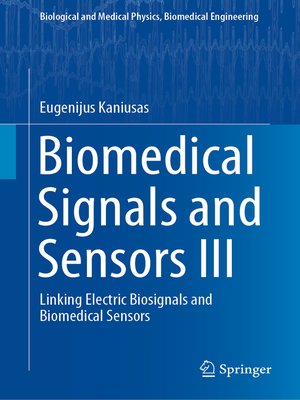Biomedical Signals and Sensors III
ebook ∣ Linking Electric Biosignals and Biomedical Sensors · Biological and Medical Physics, Biomedical Engineering
By Eugenijus Kaniusas

Sign up to save your library
With an OverDrive account, you can save your favorite libraries for at-a-glance information about availability. Find out more about OverDrive accounts.
Find this title in Libby, the library reading app by OverDrive.



Search for a digital library with this title
Title found at these libraries:
| Library Name | Distance |
|---|---|
| Loading... |
Readers will learn how these electric, magnetic and electromagnetic fields propagate and interact with biological tissues, are influenced by inhomogeneity effects, cause neuromuscular stimulation and thermal effects, and finally pass the electrode/tissue boundary to be recorded. As such, the book helps them manage the challenges posed by the highly interdisciplinary nature of biosignals and biomedical sensors by presenting the basics of electrical engineering, physics, biology and physiology that are needed to understand the relevant phenomena.







